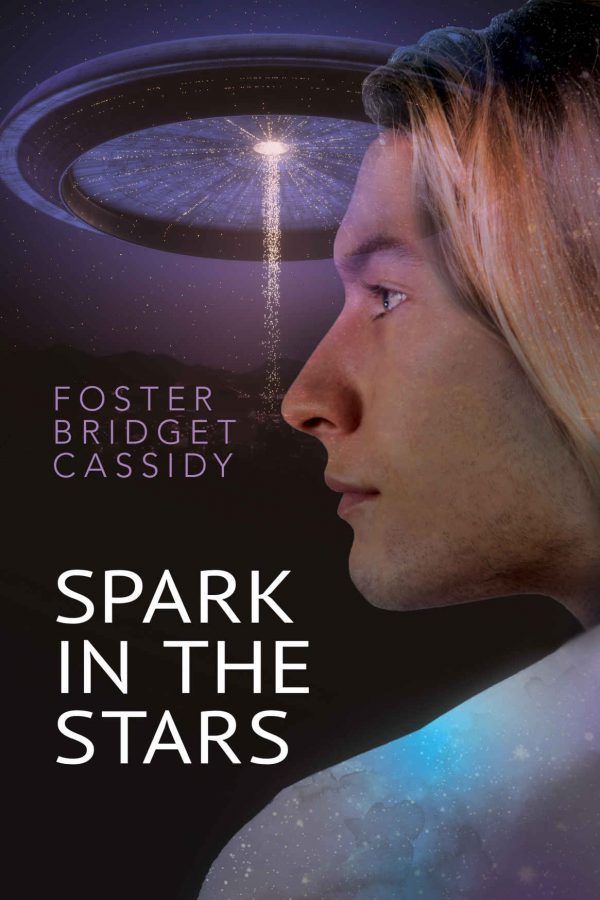
OBIR: Occasional Biased and Ignorant Reviews reflecting this reader’s opinion.

Windship: The Crazy Plague – by Guy Immega, Martin Ivison, David Manning, Andrew Reid, Fran Skene, Lisa Smedman, and Peter Tupper.
Published out of Vancouver, B.C., Canada , 2018.
Premise:
Trade across the desert planet New Hope involves competition between steam-powered and wind-driven dune-cresting vessels. A “native” economy is developing nicely, till a wave of insanity sweeps the colony.
Review:
Collaboration between authors on a single work has always fascinated me. Forty years ago Stan G. Hyde and I worked together on a short story about space pioneers in the Asteroid Belt. We intended it to be the first in a series. For a year or so we amused ourselves with World Building, i.e. flinging ideas at each other with fanatical enthusiasm. Then we knuckled down and began writing the story. The idea was to take turns writing sections in sequence till the story was complete. Instead we wound up constantly rewriting what each other had written. Eventually, we realized we were trapped in some sort of bizarre, closed loop and put a stop to it. Chalked it up as an experiment which went nowhere.
One of my inspirations was the writing team of Frederik Pohl and C.M. Kornbluth, who had produced classics like THE SPACE MERCHANTS and GLADIATOR-AT-LAW. Pohl had written the first 20,000 words for GRAVY PLANET (which later was retitled THE SPACE MERCHANTS), and handed it to Cyril, who was staying with him at the time (circa 1951). As Pohl described the process in his autobiography THE WAY THE FUTURE WAS, “Cyril took the manuscript away and when I saw him again he had rewritten the first 20,000 words and added a whole new middle section. The last third we wrote turn and turn about, and then I put the whole thing through the typewriter one more time, and what came out Galaxy Magazine serialized as GRAVY PLANET.” Not exactly systematic, but it worked.
Another example is THE DIFFERENCE ENGINE in 1991, a collaboration between William Gibson and Bruce Sterling, which is a glorious Steampunk novel based on the premise that Charles Babbage’s Victorian era mechanical computer had initiated an information revolution equivalent to today’s electronic revolution. As I dimly recall from comments made by Gibson at several local (in Vancouver) VCON SF conventions, he and Bruce had taken advantage of the 1990 creation of the World Wide Web to exchange computer files (both being “cutting edge” tech pundits, to put it mildly). As I understand it, they took each chapter in turn while functioning as each other’s editor. My memory sucks these days, so apologies if I’ve got it wrong. Whatever it is they did, it, too, worked.
As a point of egoboo, William Gibson signed my copy of THE DIFFERENCE ENGINE “To the legendary God-Editor, G.C.!!!” in recognition of my persona while editing BCSFAzine, the newsletter of the B.C. SF Association. Incidentally, he is the one who gave the newsletter its name, starting with issue #34 back in April 1976, writing “I suggest we call it BCSFAzine in the old fannish tradition of forcing people to roll phonetically-unlikely acronyms around in their mouths like so many marbles.” Digressing further to an absurd degree, I note that I edited the newsletter from #193 June 1989 to #269 October 1995, and then, in a fit of madness, returned to editing BCSFAzine in March of 2020. Weird. But enough of that.
Point is, I’ve always been intrigued by collaboration methods and techniques. So, naturally, I couldn’t resist attending the panel “The Windship Stories: Collaborative World Building” at VCON 42 in October 2018. Of the four Panelists, three (Lisa Smedman, Fran Skene, and Peter Tupper) were fellow BCSFAns I’d known for over thirty years, and the last, Guy Immega, was a U.B.C. Professor, an expert in Robotics, I had once interviewed for BCSFAzine. They were members of a writers workshop, originally founded as a BCSFA workshop, which I believe is still ongoing. The other three collaborators, not present, were also members of the workshop.
Normally, individual participants in a workshop produce individual works to flog to publishers. In this case, seven authors collaborated on a book which, edited by Lisa Smedman, they then self-published. How the heck did they manage to do this? Certainly, they worked closely together. Just hammering out the basic premise and gradually filling in the details took a ferocious amount of give and take. But here’s the extraordinary thing; none of them wrote the book as such. It is an anthology consisting of “nine tightly integrated stories,” each essentially a stand-alone, yet all contributing to the overall story arc. The authors were intimately familiar with the entire scope of the work, having helped create it, but were focused on the individual chapters assigned to them. I would argue this combines the best of both worlds, writing for yourself AND writing in collaboration. True, writing to a shared world is a common theme for anthologies in recent decades. The superb MEDEA: HARLAN’S WORLD, created and edited by Harlan Ellison, springs to mind. But WINDSHIP depends on a mutually-created shared world, which adds strength and credibility to everyone’s contribution, in my opinion.
It was organized this way: Lisa wrote chapter #1, Guy #2, Andrew #3, Martin #4, Fran #5, Peter #6, 7 & 8, and Guy and Lisa co-wrote the concluding chapter #9. Is this the solution to collaboration? Share brain-storming, critiquing, etc., but ultimately assign total responsibility to a given section to just one of the collaborators? Sounds like a viable and effective plan! How did it work out in practice?
Been meaning to review WINDSHIP for quite a while. Finally decided to do it but, as usual, am pressed for time. So I’m just going to review the first two “stand-alone” chapters to get a sense of how well the collaborator’s system functioned.
CHAPTER ONE: RACE AGAINST THE WIND – by Lisa Smedman.
Premise:
Captain Min will lose her courier contract, and her highly-mortgaged windship Fusheng, if she fails to win a long-distance race with the steamship Hashima.
Review:
First of all, the concept of large, self-contained vessels travelling over land is not new. Consider the multi-wheeled rollers in THE GREEN ODYSSEY (1957) by Philip José Farmer, and the trimarans sailing an ocean of monoatomic dust in INVOLUTION OCEAN (1977) by Bruce Sterling. Or, for that matter, stretching the concept a bit, the magnificent self-propelled cities rampaging across Europe in MORTAL ENGINES (2001) by Philip Reeve, turned into what I consider a fun, entertaining film by Peter Jackson in 2018.
However, look at the Fusheng depicted on WINDSHIP’s cover illustration. It’s a spritely craft, a wooden catamaran about seventy feet long, with fore and aft rig, six huge wheels, a crew of eight, and passenger capacity of eight plus a small amount of cargo tonnage. Cruising speed is about thirty miles per hour. In a gale she can reach forty MPH, but risks damage to her wheels, so must reef her sails and hunker down to wait out the storm.
Her competition in the race is the Hashima, a great big clunker of a coal-powered steam tractor hauling multiple wheeled wagons. She consumes prodigious quantities of coal and water, but can match the Fusheng in speed and endurance as long as she can be refueled along the route at convenient intervals.
The race itself conveys excitement and thrills similar to Mark Twain’s famous description of a steamboat race in LIFE ON THE MISSISSIPI (1883). The Windship race is full of twists and turns in more ways than one. There are shenanigans and dirty tricks in plenty, multiple examples of betrayal and loyalty handicapped by paranoia, not to mention Murphy’s Law going into overdrive to the point of rendering Murphy the patron saint of the race. This makes for glorious fun as the reader strives, and fails, to guess the next unexpected turn of events.
What is particularly impressive is that, despite labouring under the necessity of imparting sufficient information to lay bare the infrastructure of the entirety of the book, Lisa submerges needful information beneath the flow of events so that the reader gradually, in mild nibbles rather than being force-fed, gains a comfortable sense of the familiar without being knocked out of the story or brought to a shuddering halt.
Lisa’s style is smooth and easy, yet richly detailed, with the focus on Captain Min Long’s character development and the ever-increasing complexity of the conundrums facing her. At no time are you ever slowed down by what you read. Instead, the pace picks up and the excitement mounts. Yet within the increasing tension and anticipation the reader learns a great deal of incidental information: the nature of the colony planet’s terrain and weather, how its economy is handicapped by a lack of resources, that cultural values are at odds because the original settlers came from a consortium of nations not entirely at ease with each other, the level of high tech left over from the original landing ships and some idea of how much has been forgotten, the threat of a devastating plague, the mystery of a long-extinct alien species and the ruins they left behind, the possibility Min is going insane, and much else besides.
The successful unveiling of the myriad complexities comes through Min being the point-of-view main character. We see her thoughts and impressions as she deals with dire emergencies, struggles to plan ahead, fights back against those who doubt her, and even during quiet domestic moments when relaxation is vital engaging in a subtle sparring contest with less-than-supportive relatives. She doesn’t have just one enemy, but thousands. Well… not enemies exactly, but human distractions who get in the way and collectively threaten her ability to cope. She is constantly reminded the ultimate responsibility for her life is hers alone. Sometimes she takes this as an invigorating challenge. Sometimes she just wants to give up. The reader feels for her, urges her on, which is to say, identifies with her.
In short, Lisa Smedman successfully introduces the setting and engages the reader to the point of wanting to read the rest of the book. Besides, the race itself is a heck of a lot of fun. Couldn’t ask for a better opening chapter. Beginning authors would do well to study it and figure out how Lisa managed to pull it off. She definitely knew what she was doing.
CHAPTER TWO: QUETZAL’S CURSE – by Guy Immega
Premise:
Are the remains of a dead alien civilization any good at all? Or worse, a danger to the colonists?
Review:
I like action-adventure on other planets, especially if it leans toward credible hard science. One reason I liked the first chapter so much.
But I’m also a sucker for concept-driven speculative fiction. In particular, nothing thrills me more than the discovery of a derelict alien artifact/spacecraft/ruined city. So, this chapter, dealing with enigmatic ruins left by a snake-like species of intelligent beings, has immediate appeal for me.
First off, the point-of-view character is Venn, an amateur archeologist whom Min calls “The Huckster.” He’s quite the dedicated enthusiast, but dirt poor, because he’s estranged from his wealthy and powerful family who have a monopoly on coal production. Though eager to determine how the aliens once lived, what they were like, and how their society functioned, so far he has little to show for his efforts. But what he does possess, an intact mummified alien, he does literally “show,” putting on a carnival barker-like display offering feathers from the mummy as aphrodisiacs for clueless settlers in the small communities where he buys supplies. It is his only means of raising money to further his research. I could say this earns him little respect from his peers, but he doesn’t have any. His competition consists of grave robbers looking to sell artifacts as souvenirs to tourists.
No surprise, really. Throughout most of history archaeology consisted of robbing ruins for the sake of profit. Heck, even the ancient Romans looted Etruscan tombs whenever they came across them. Mind you, no surprise there. They looted from living cultures, never mind dead ones. Anyway, serious archaeological investigation for the sake of knowledge is a concept scarcely two centuries old. Even today, the majority of digging is clandestine and illegal, with great and wonderful things being sold on the international black market in “art” and disappearing into private vaults.
This is why L. Sprague de Camp, author of LEST DARKNESS FALL (1939), when asked what he would do if given a billion dollars, replied that he would immediately spend it all on world-wide emergency archaeological digs to rescue our ancient past before it disappeared under urban sprawl or into rich people’s secret collections.
Point is, Venn, a minor character merely introduced in the first chapter but here coming into his own, is someone I identify with, because I love what he’s trying to do. If I were in charge of the New Hope colony I would assign archaeological investigation a high priority, which explains why no one ever invites me to command interplanetary expeditions. Actually, there are other, more obvious reasons, but never mind.
I’m fairly certain the nature of Venn’s character was thrashed out by the team in the world building phase. He’s certainly a difficult character for Guy to tackle. Venn is ludicrously impulsive, an inveterate second-guesser who regrets everything as soon as it happens, suicidally naive when it comes to trusting others, tends to be totally oblivious to what is actually going on, and worst of all, is saddled with consistent bad luck no matter what he does or where he goes. He’s kind of the exact opposite to Min. This may explain why they are reluctantly attracted to each other against their better judgement.
Guy is not quite as polished a writer as Lisa, in that he is more matter-of-fact in style and his internal monologue technique a tad less personal. Nevertheless, as befits a scientist, his writing is clear, precise, and often vivid, so much so that I found myself feeling embarrassed for Venn from time to time. Such a loser. A character who is his own worst enemy, simply because he’s too trusting and too abstract and given to fantasizing when striving to boost his own morale. Not at all a hard-nosed realist like Min. Venn is basically a decent guy who deserves better. No wonder the reader winds up rooting for him. So, throughout the second chapter the reader’s interest remains engaged.
Mind you, the chapter is not just a rundown of Venn’s hapless character. It serves to forward the overall story. Venn makes, or more accurately, experiences discoveries which raise all sorts of questions. Do the Quetzal’s (so nicknamed because they are literally feathered-serpents—nobody knows what they actually called themselves) have anything to do with the crazy plague? Is there another intelligent species hiding in plain sight? Could it be the current colonists are not the first such to arrive from Earth? Is all life on the planet, not just the humans, doomed? Is the plague craziness really madness, or a type of Psi vision, or even a technological artifact with unfortunate consequences? The only way to find out is to keep reading.
CONCLUSION:
To sum up, the first two chapters lure me on deeper and deeper into the book. I want to read it through, but time constraints cut me off if I am to review it for this particular column. So I chose to restrict myself to studying the first two chapters. There are seven chapters remaining. I intend to read them.
In fact, to illustrate how much I’ve enjoyed the book thus far, I’m not going to continue reading from my kindle version. I’ve ordered a physical copy so I can experience the full tactile joy of reading a book the way books are meant to be read. I have the feeling I am going to be proud to include it in my personal library. A subtle hint I think you would enjoy reading it too. It’s a fun book full of complex characters and nifty ideas. And alien ruins. Don’t forget the alien ruins!
Check it out: < Windship: The Crazy Plague >










